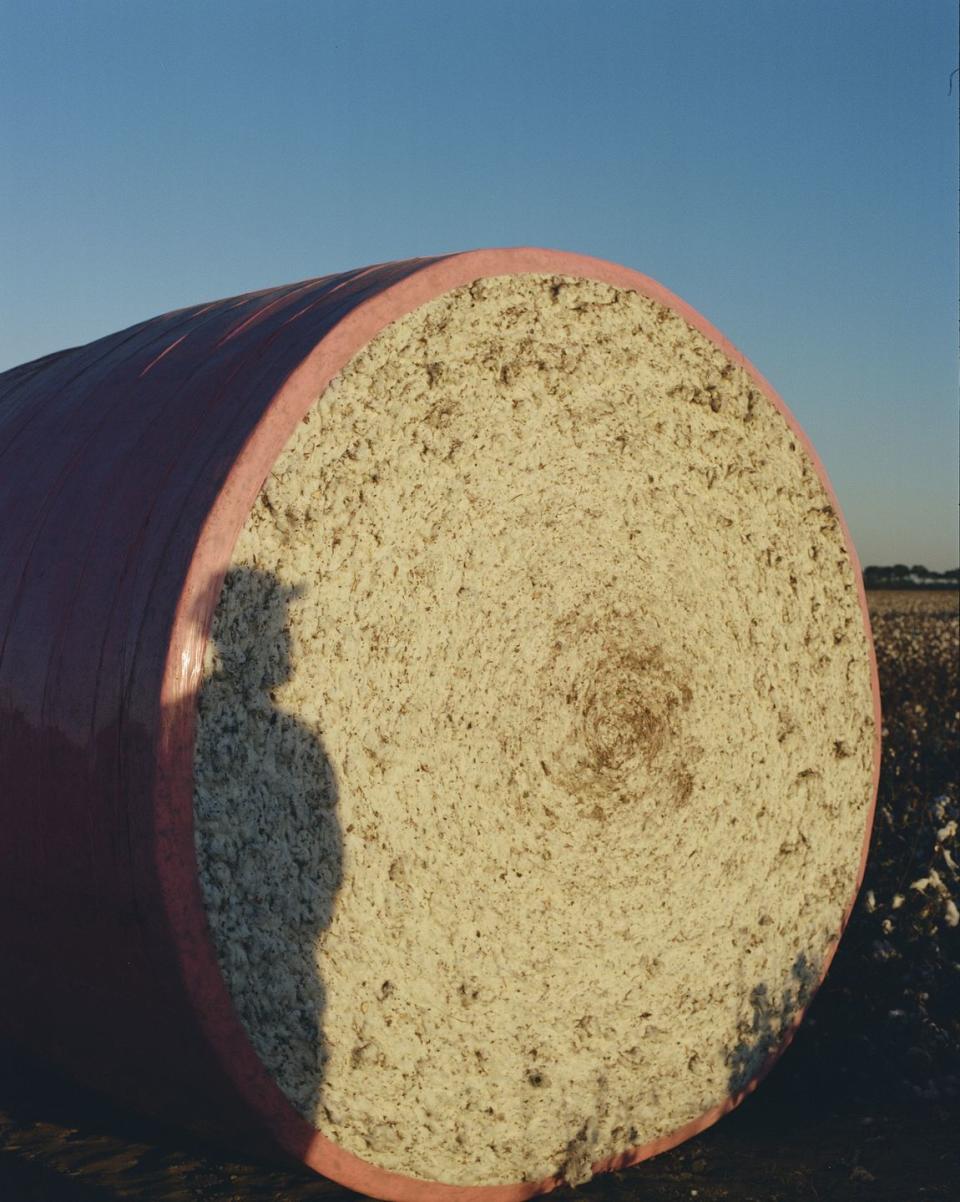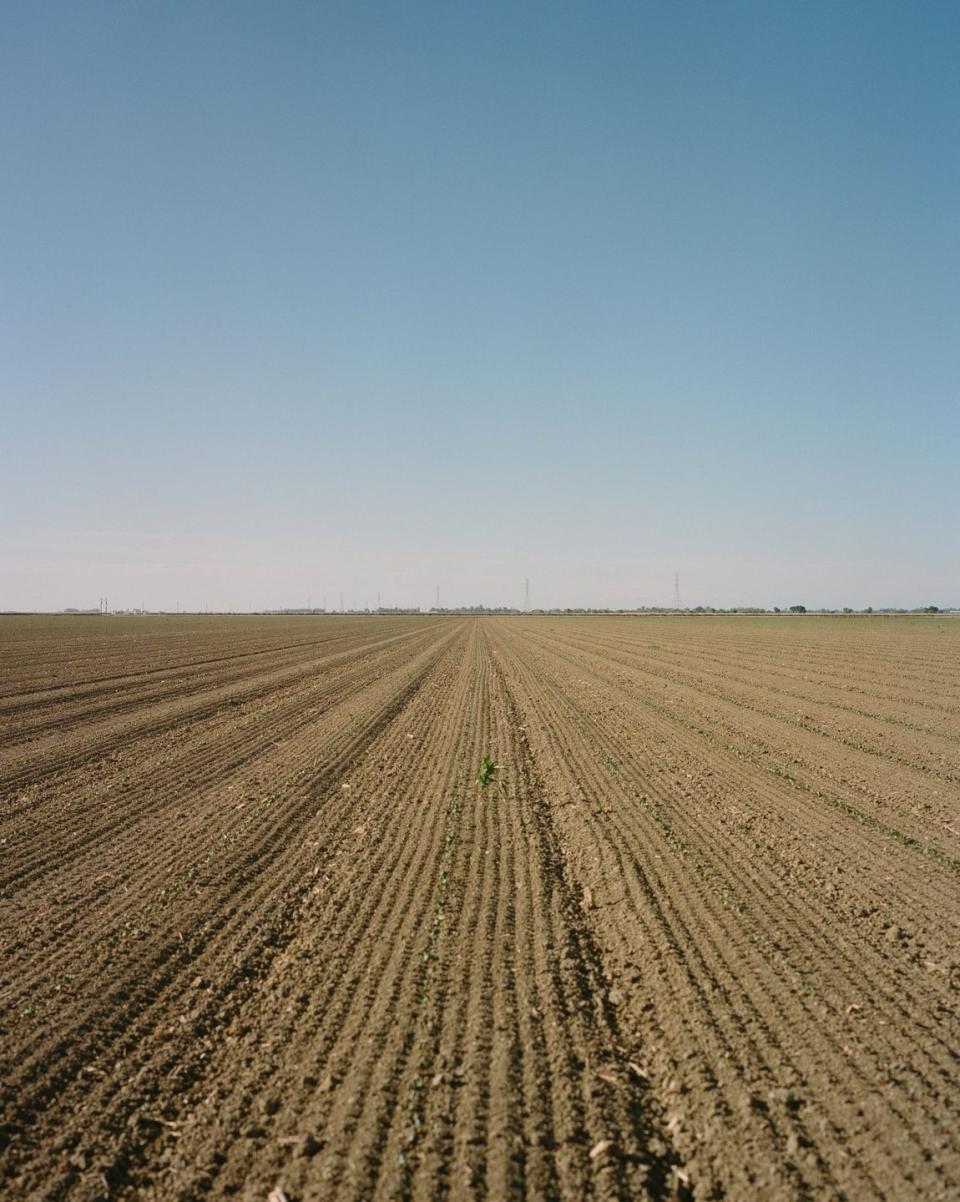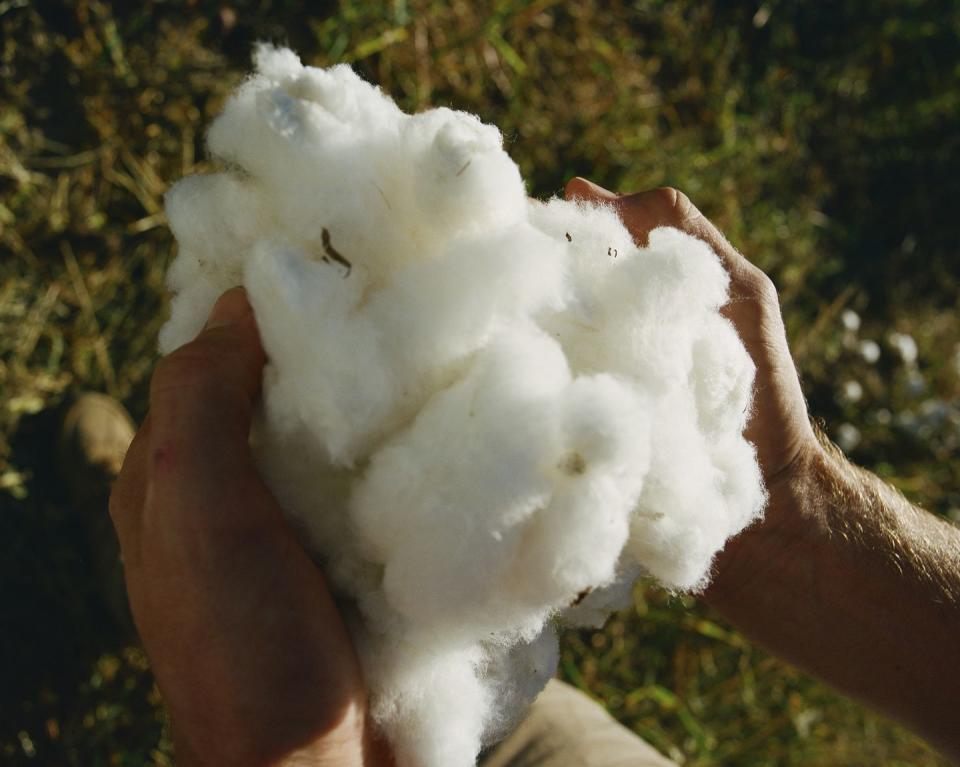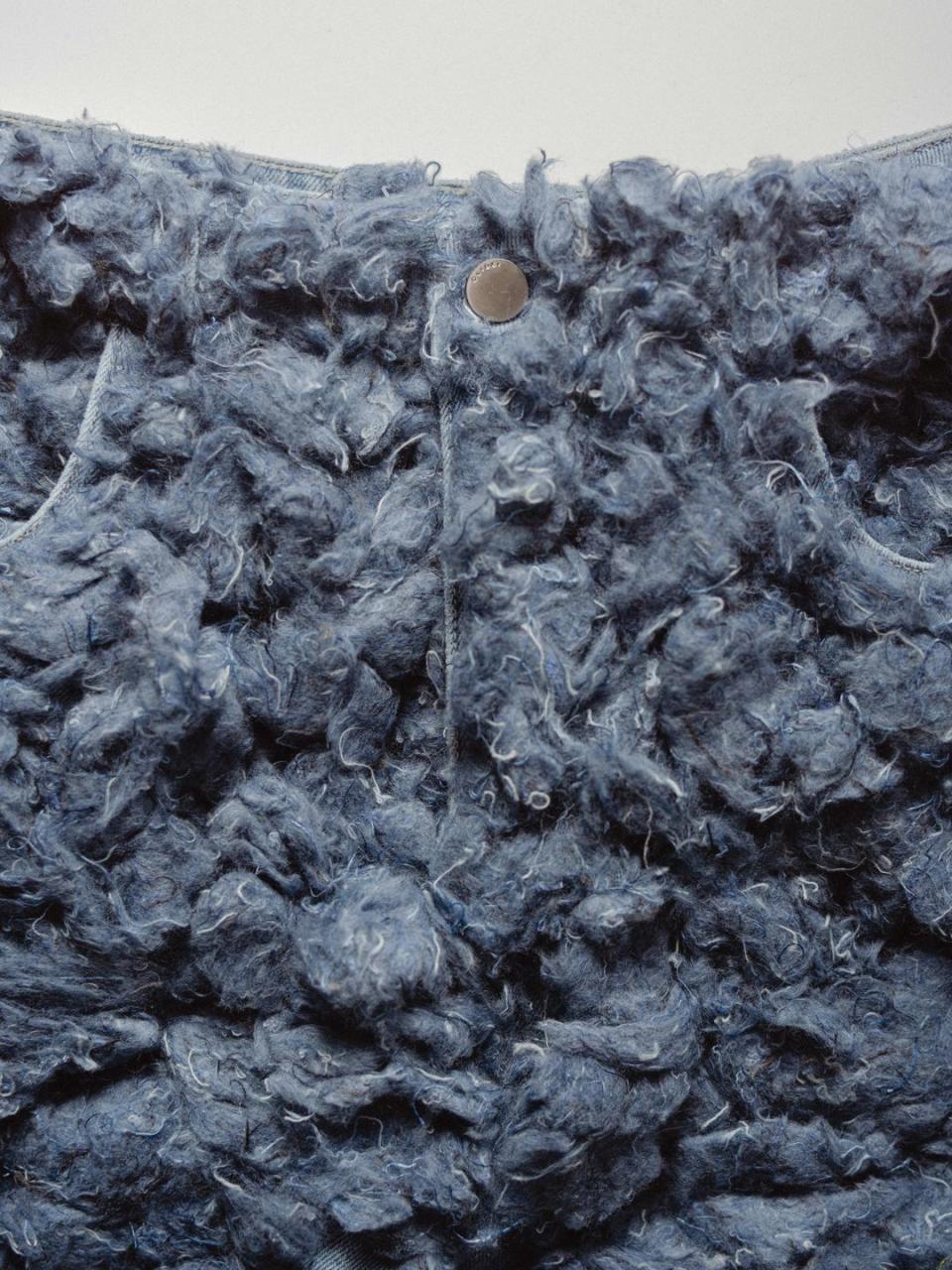This Is How Denim Brands Are Paving the Sustainable Way

"Hearst Magazines and Yahoo may earn commission or revenue on some items through these links."
As a denim editor for ELLE, I get more than my fair share of pitches and press releases about new collections, collaborations, and, seemingly more than ever, sustainability initiatives. How is it, I wondered, that the denim industry became one of the leaders in environmentally responsible practices when it comes to ready-to-wear? Well, after a meeting with Citizens of Humanity, where the brand enlightened me about its regenerative cotton practices (more on that later), I decided to connect the dots.
It’s no secret that sustainability has been a conversation in fashion for years, if not decades. As one of the most notoriously damaging industries to the environment, fashion—and shopping, for that matter—is simply not sustainable. “Waste is a big issue,” said Beth Esponnette, the co-founder and creative director of unspun, a garment technology company specializing in zero-waste production. “The fashion industry produces over 97 million tons of waste annually, including textiles, chemicals, and packaging materials.”
The production and distribution of clothing, overconsumption, and trend culture all contribute to the woes of fashion’s sustainability crisis, but only a handful of major ready-to-wear brands, like Stella McCartney and Gabriela Hearst, have built solutions into the business. Even more accessible brand tiers see a small percentage of names, such as Everlane, Anthropologie, or Reformation, that aim to reduce waste and minimize impact on the environment. Think about it: If you consider yourself a responsible shopper on any level, from the local mall to Rodeo Drive, how many popular brands—that you can name—are associated with sustainability?

To make matters worse, some brands lean into greenwashing, a term used for those that only pretend to value sustainable initiatives but actually just do it for the marketing clout rather than implement helpful strategies. Sustainable capsule collections, for example? A nice start, Sarah Ahmed, founder and CEO of DL1961, points out, but a better finish would be a pledge to make the entire business circular—or at least initiate a plan to get there over time. “We encourage consumers to be aware of this and push brands to do better and think bigger,” Ahmed said. Esponnette expands further: “It was initially exciting to see the release of sustainable capsules, but now fashion brands and companies must take it further than one-off collections; producing sustainably has to be the standard moving forward.”
Brands have come a long way in designing quality, aesthetically pleasing, and even functional pieces that still incorporate sustainable practices, but there are sectors that stand out in such initiatives. Denim, while certainly nuanced, doesn’t necessarily need to adhere to traditional fashion markers tied to trends, seasons, or flashy design gimmicks like typical ready-to-wear brands. Consumers know what to expect when trying on a pair of jeans. They’re made to be worn consistently as staple pieces rather than once or twice a month, and perhaps most importantly, there’s no pretension when it comes to denim. This realm of fashion is unapologetically casual and never out of style, two important qualities to keep in mind—and it’s likely these reasons that denim brands can experiment with more environmentally friendly methods, improving processes along the way.
From the Ground, Up
Let’s get into the weeds, though. It’s not all rainbows and sunshine when it comes to the path towards sustainability. For a while, denim was one of the worst parts of the fashion industry in this aspect. To make a pair of jeans, cotton must first be grown; this takes up land, depletes the soil of important nutrients, and facilitates the use of damaging chemicals. “Conventional cotton farming involves heavy use of pesticides and fertilizers, which not only harms the environment but also those that use and apply them,” said Amy Williams, CEO of Humanity Group, which produces Agolde and Citizens of Humanity’s collections. “While the shift to organic cotton limits chemical usage, it doesn’t address broader issues such as soil health degradation and mitigating carbon loss from tilling practices.” What that looks like from the outside looking in is a heavy burden, physically and financially, on farmlands around the world. It’s easy to forget if you live in the city or the suburbs, but farmland is crucial to survival outside of fashion. To make it simple: no farms, no food.

Compared to other manufactured ready-to-wear pieces, the damage from denim is on the front end of production, which means there are more ways to get ahead of the problem. Because most denim products are made from cotton rather than blended fibers, they’re more reusable and recyclable, and they can even be regenerative. “All the cotton we source is responsibly produced and meets at least one of four international certifications for quality and impact,” the DL1961 website states. “In addition to our Recover™ recycled cotton, we use cotton that has been certified by the Better Cotton Initiative (BCI) and Cotton USA™. This provides us supply chain traceability to ensure our cotton meets social, ethical, and environmental standards that protect and promote the livelihood of cotton farming communities.” (For those who aren’t familiar, Recover™ is one of multiple tech companies that promote circularity in fashion by taking used fibers and creating new materials out of them.)
This mindset of recycling fibers is taken a step further with regenerative farming. “Regenerative agriculture can reverse the effects of climate change while increasing soil fertility and improving human health,” said Williams. Additionally, it reduces carbon dioxide in the atmosphere and grows organic matter in the soil by sequestering carbon through increasing photosynthesis.”
What is regenerative agriculture, you might ask? Simply put, it’s a way farmers can replenish their land while still producing output that’s profitable. Think of what you might’ve learned in science class: Crop rotation, strategic water practices, and soil biodiversity are all beneficial in the long run, even if it means more effort, planning, education, and time on the front end. Crop performance and yield might be diminished by the transition from traditional to regenerative practices in the short term but can ultimately be maximized without pesticides, fertilizers, and other depletive farming practices, according to the data-driven Advancing Eco Agriculture (AEA) organization.
Humanity Group’s Regenerative Cotton Program partnered with AEA to become an industry leader in this type of initiative, helping farmers in the U.S. and Turkey, where the company’s denim is produced, transition to regenerative agriculture by providing financial, technological, and educational resources to mitigate the risks associated with such a transition, from testing to equipment. After all, farmers are people too, and it’s an incredibly expensive industry. Regenerative farming practices will benefit their businesses and the land in the long run while reducing the overall carbon footprint of the products they help make.

Washing Out the Waste
Next up: How to tackle over-extensive wash processes?
Traditionally, after the raw materials are harvested, harsh chemicals and petroleum-based indigo dyes are used to color the jeans, and then multiple wash processes—which use excessive amounts of water (the industry standard is 1500 gallons)—are performed to create the texture and fade. Brands like DL1961 own their entire manufacturing process and prioritize supply chain transparency with like-minded facilities, making it possible to implement strategies that support sustainability and actually see them through. “Throughout the production process, DL1961 conducts rigorous quality control and testing to ensure the durability, comfort, and fit of our jeans,” said Ahmed. “We monitor water, energy, and other resources to make sure each piece falls within our standards for sustainability and efficiency.”
DL1961 uses Jeanologia’s Environmental Impact Measurement (EIM) software, which is a platform brands can use to easily monitor and understand how processes are working and where there might be room for improvement. “We treat and recycle 98 percent of the water we use, equaling up to 2700 gallons per day,” Ahmed said. “After it’s used in the manufacturing process, water is funneled into our in-house water treatment plant, where a special bacteria eats the indigo dye so the water is safe to return to municipal drains. To significantly reduce the use of harmful chemicals often used in denim production, we employ waterless processes and recycle post-consumer waste to yield high-quality cotton and create vintage-inspired finishes that are better for the environment.”
At Humanity Group, high-efficiency dye and wash machines reduce water and chemical usage by up to 50 percent, while ozone laundry processes—which combine oxygen and electricity to sanitize product—consume 60 percent less water than traditional wash systems and dissolve after use. Laser technology can be used to create distressed effects, while Eco-Stones (made from synthetic, recyclable materials) reduce dust and waste that can be harmful to factory workers. Natural enzymes are used to achieve an authentic, distressed look, and green-certified softeners, silicones, and neutralizers make a pair of jeans the perfect texture while reducing the use of harsh chemicals.

Humanity Group also uses indigo technologies like KITOTEX® and INDIGO JUICE® to save 15 percent water, 33 percent chemicals, and 25 percent energy compared to conventional dyeing methods. KITOTEX® is a natural alternative to petrol-based polyvinyl alcohol (PVA), which is typically used as a sizing agent for denim. You’ve probably heard of microplastics—well, PVA is that. This technology uses chitosan, a bio-polymer made from materials like insects, crustaceans, algae, and fungi, making it biodegradable after use. INDIGO JUICE®, on the other hand, keeps dyes on the surface of the garment during wash processes, leading to more efficient washing and fading while using less water.
While some brands’ solutions are on the surface of our jeans, Etica Denim goes deeper. “We have a patent pending on our InCloud® technology, which leverages nanotechnology to treat fabrics and fibers at the molecular level,” said Agustin Ramirez, the brand’s owner. “This groundbreaking technology drastically reduces water consumption per jean, from the industry average of 200-300 liters to just one to three liters. Moreover, our process consumes 90 percent less water and 70 percent less energy compared to industry standards.”

Methods like these require resources and knowledge, which are part of the investment for these brands. Not every brand can afford investments of this scale—or they don’t find them worth it for the bottom line. But as companies develop more patented technologies to aid these efforts in a competitive, accessible market, brands are running out of excuses for not having at least a few initiatives in place.
Weaving in a Culture of Sustainability
Some brands have entire departments dedicated to making the company more earth-friendly, while others have sustainability ingrained into the business. Sure, that means even more investment—this time on the people front—but to have a thoughtful, considered brand requires manpower. “The biggest indicator of success is whether a company views sustainability as a key driver of future value with direct oversight and sponsorship from the C Suite,” said Luke Henning, chief business officer of Circ, another science-backed company combining technology with responsible fiber production. “Without that support, even with sustainability and innovation teams, projects tend to end at small-scale pilot tests.”

For companies and executives who might not understand the nuances of this very real, very research-heavy part of the fashion industry, it can be intimidating to tackle such a huge change. “Through [unspun’s] partnerships with different brands, we’re happy to support new fiber recycling in our work,” Esponnette said. “Given that most companies’ current incentive structures are built around shareholder returns, sustainability teams and advocates need to learn how to speak and present the business case first, then follow up with the sustainability benefits second.”
So what can we, as consumers, take from all the behind-the-scenes science and research that these brands are pushing? “Education is the foundation for everything,” said Williams. “Understanding the elements that can have an impact on the environment, and what those elements are, is key.” It’s undeniably easy to simply Google “jeans” and pick your favorite style, the cheapest price tag, or the coolest designer, but it’s also increasingly cool to be conscious. In some circles, it’s almost hard not to shop consciously when it comes to denim, but knowing the work that goes behind it can make it even easier to choose a product you align with.
Brands, denim or otherwise, that make efforts and practices known while still creating quality products for all sorts of customers can see rewards on the investment in the long run as regulations continue to push for earth-friendly initiatives and shopper outlooks lean towards intentional consumption. Staying ahead of the curve one thread at a time, the denim industry’s experimental, community-driven mindset might be the answer to fashion’s sustainability crisis.
For more information about sustainability terms and practices, check out our Complete Glossary of Sustainability Terms.
You Might Also Like

